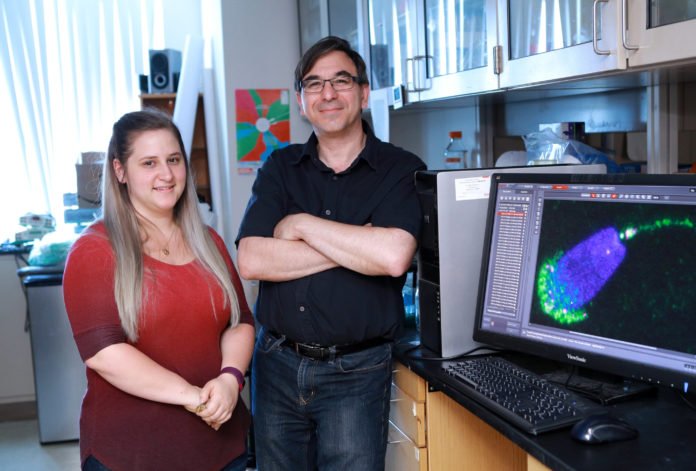According to a new study, a father donates not one, but two centrioles through the sperm during fertilization. This discovery done by The University of Toledo is significant because abnormalities in the formation and function of the atypical centriole may be the root of infertility of unknown cause in couples who have no treatment options available to them.
Scientists have discovered sperm structure that they think may contribute to infertility, miscarriages and birth defects. The functions of the structure are similar to the centriole. And scientists suggests that It also may have a role in early pregnancy loss and embryo development defects.
The centriole is the only essential cellular structure contributed solely by the father. It is the origin of all of the centrioles in the trillions of cells that make up the adult human body. Centrioles are essential for building the cell’s antennae, known as cilia, and cytoskeleton, as well as completing accurate cell division.
In order to start a new life, the fertilized egg cells require two centrioles. But sperm provides a single centriole to the egg.
Dr. Tomer Avidor-Reiss, professor in the UT Department of Biological Sciences said, “Since the mother’s egg does not provide centrioles, and the father’s sperm possesses only one recognizable centriole, we wanted to know where the second centriole in zygotes comes from. We found the previously elusive centriole using cutting-edge techniques and microscopes. It was overlooked in the past because it’s completely different from the known centriole in terms of structure and protein composition.”
The atypical centriole contains a small core set of proteins needed for the known sperm centriole to form a fully functional centriole after fertilization in the zygote using the egg’s proteins.
In addition to human sperm, Avidor-Reiss and his research team studied the sperm of flies, beetles, and cattle.
Lilli Fishman, UT PhD candidate who is being honored with the 2018 Lalor Foundation Merit Award from the Society for the Study of Reproduction for her work on the project said, “The whole idea for this study started with the fly. Basic fly research indicated the misconception in sperm structure. It has been a great experience to be part of the ensuing process that included incredible scientists from four states and two countries.”
During the study, scientists used cutting-edge techniques and microscopes including super-resolution microscopy; electron microscopy with high-pressure freezing; and correlative light and electron microscopy.
Avidor-Reiss said, “The super-resolution microscopy technology allows you to see proteins at the highest resolution.”
“We are working with the Urology Department at The University of Toledo Medical Center to study the clinical implications of the atypical centriole to figure out if it’s associated with infertility and what kind of infertility.”
The research was published today in Nature Communications.
